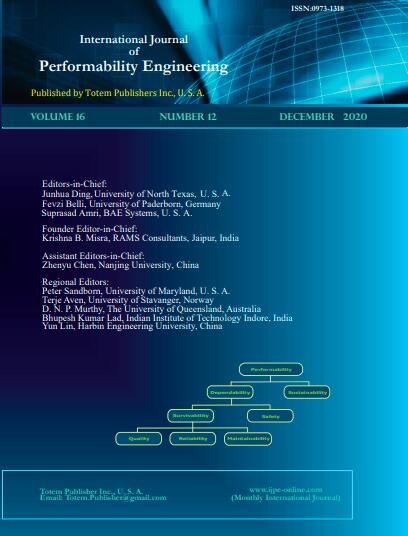-
Critical Component Identification and Reliability Enhancement of AC Metro Traction Substation using FTA and Sequential Monte Carlo Simulation
- Kunpeng Li, Shoujie Jin, Zhixin He, Qianqian Yang, Sheng Lin
-
2020, 16(12):
1862-1874.
doi:10.23940/ijpe.20.12.p3.18621874
-
 Abstract
Abstract
 PDF (396KB)
PDF (396KB)

-
References |
Related Articles
Traction substation is the only power source for subway trains, and its reliable operation is essential to guarantee the safety of the AC metro systems. Therefore, it is significant to accurately assess the reliability and provide guidance on reliability enhancement approaches. In this paper, firstly, by dividing the AC metro traction substation into two series blocks according to the system structure and operation mode, the fault tree analysis (FTA) model is established; then, using sequential Monte Carlo simulation, the reliability indices are obtained and the critical components of the system are identified; finally, the reliability level of the AC metro traction substation is considerably improved by enhancing the robustness of critical components. The proposed method is verified through case study, and it shows that: (1) with consideration of time-varying characteristics, the sequential Monte Carlo method can effectively capture the dynamic variation of system reliability with the accumulation of operation time; (2) the co-phase power supply device (TX1), circuit breaker (L315), 25 kV bus, and cable (L5 and L6) are identified as the critical components of the system; by enhancing the reliability of these pieces of equipment, the system reliability can be effectively improved. The research in this paper can help designers to identify and enhance the critical components to improve system reliability in the designing stage, and they can also enable maintenance personnel to comprehend the system operation condition and pay more attention to critical equipment during the inspection and maintenance period.

